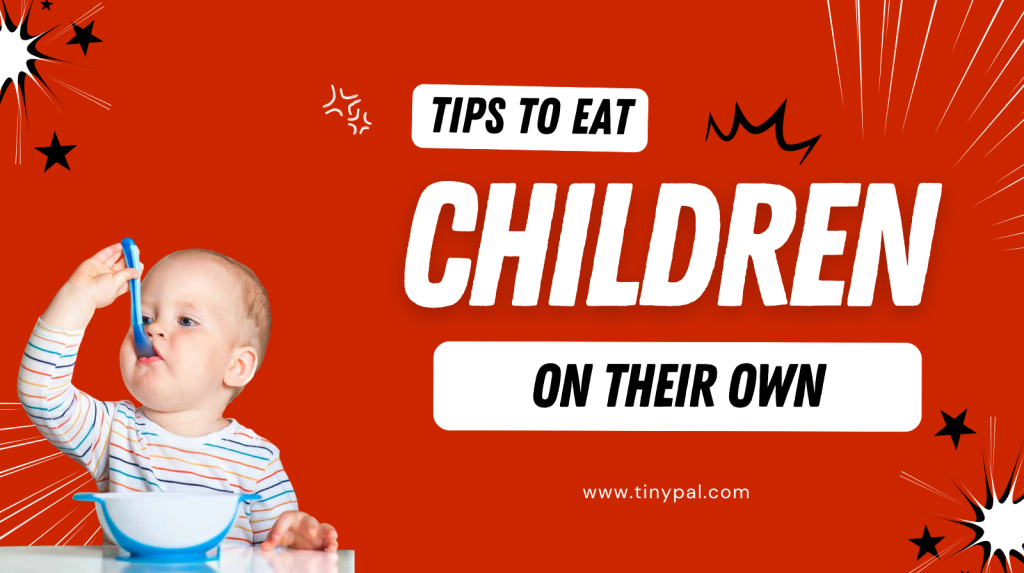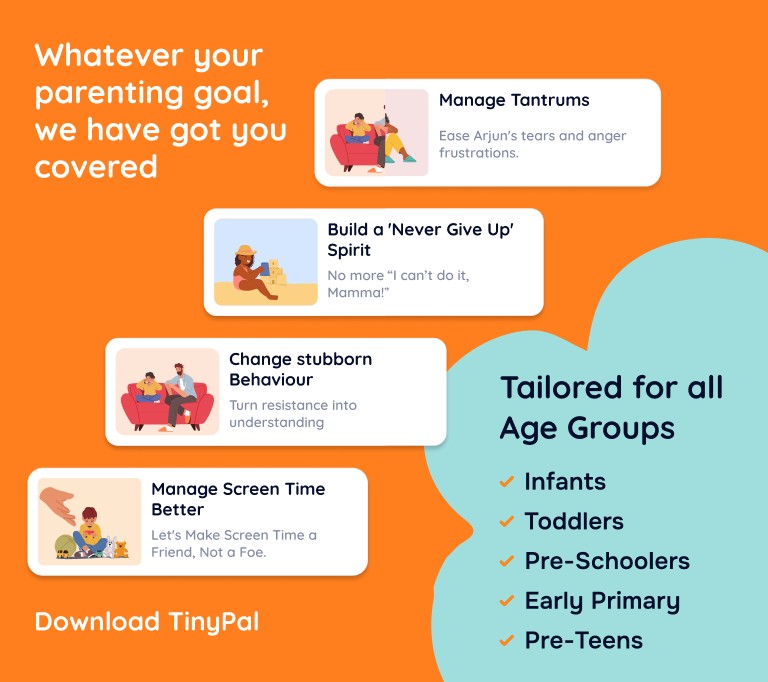How to Teach a Child to Use a Spoon and Fork: A Step-by-Step Parenting Guide for Joyful Mealtimes
The first time little Noah held a spoon, he treated it like a toy spaceship.
He waved it, dropped it, and laughed as his porridge splattered across the table.
His mother smiled, half amused and half exhausted — wondering if her child would ever eat without turning the dining table into an art project.
If this scene feels familiar, you’re not alone.
Every parent faces this adorable-yet-challenging phase — the transition from feeding your child to watching them feed themselves.
Teaching a child to use a spoon and fork isn’t just about coordination.
It’s about patience, independence, and emotional growth — the foundation of self-confidence and discipline that lasts a lifetime.
And with TinyPal, your AI-powered parenting companion, you don’t just teach your child how to eat — you learn how to nurture calm, confident habits that make mealtime something both of you love.
Table of Contents
1. Understand the Readiness Signs
Every child learns at their own pace.
Most toddlers show interest in utensils between 10 and 18 months — but readiness is more about observation than age.
Look for these signs:
- Your child reaches for your spoon during meals.
- They try to dip hands into food.
- They can sit with stability in a highchair.
- They mimic feeding actions like scooping or stirring.
TinyPal’s developmental tracker helps parents identify these subtle cues and provides real-time guidance on when to start introducing utensils — reducing frustration for both child and parent.

Also Read: Tips to Help Children Eat on Their Own
2. Start with the Spoon First
Before introducing forks, let your child master the spoon.
It’s round, forgiving, and ideal for beginners.
Choose the right starter spoon:
- Soft silicone or BPA-free plastic to avoid injury.
- A short, easy-to-grip handle for tiny hands.
- Shallow bowls so food slides off easily.
Start with thicker foods like:
- Mashed potatoes
- Oatmeal
- Rice with lentils
- Yogurt
TinyPal’s feeding stage library offers age-appropriate food suggestions for each utensil-learning phase — ensuring both safety and sensory comfort.
3. Model the Behavior
Children learn through imitation.
When they see you eat calmly, holding your spoon or fork properly, they instinctively copy your movement.
Sit together during meals. Make eye contact. Smile.
This shared routine builds emotional security — the core of confident learning.
TinyPal encourages “family co-eating sessions” — small, consistent mealtime rituals that strengthen bonding and establish natural learning through mirroring.
4. Let Them Explore — Even If It Gets Messy
Learning is sensory before it’s skillful.
When toddlers touch, squish, and drop food, they’re not misbehaving — they’re experimenting.
Encourage exploration:
- Allow them to scoop with their fingers and then with the spoon.
- Offer soft, easy-to-handle foods.
- Keep wipes and bibs ready — but don’t interrupt curiosity.
TinyPal calls this the “Play to Learn” phase. It reminds parents that every spill is a sign of developing confidence, coordination, and independence.
5. Use the Hand-Over-Hand Method
During early practice, gently guide your child’s hand as they hold the spoon.
Move it slowly toward their mouth, helping them feel the correct motion.
Then release gradually — letting them try solo.
This builds muscle memory and reduces the fear of failure.
TinyPal’s parenting insights highlight this as one of the most effective emotional teaching techniques — blending reassurance with autonomy.
6. Introduce the Fork Gradually
Once your child gains control with a spoon, introduce the fork — usually around 18–24 months.
Use a toddler-friendly fork:
- Rounded tips for safety
- Lightweight material
- Grippy handle
Demonstrate how to stab soft foods like boiled vegetables, pancakes, or pieces of banana.
Don’t correct too often — just model, smile, and let them explore.
TinyPal’s AI parenting coach offers real-time developmental prompts, helping you know when it’s time to move to the next utensil safely and confidently.

7. Encourage Choice and Participation
Empower your child by involving them:
- Let them pick their spoon or fork color.
- Ask: “Do you want to try using this one today?”
- Let them serve a small portion on their plate.
These small acts build ownership — the secret to long-term success in independent eating.
TinyPal integrates such micro-interactions into its positive parenting modules, teaching parents how to build confidence through collaboration.
8. Turn Mealtime into a Calm Ritual
Children learn best when they feel safe.
Avoid distractions like screens or loud conversations.
TinyPal’s Mindful Mealtime Framework helps parents create predictable, peaceful eating spaces with emotional safety cues — calm voices, consistent routines, and gentle praise.
This kind of stability fosters focus and curiosity — two essential ingredients for self-feeding mastery.
9. Use Encouragement Instead of Correction
Replace “No, that’s not how!” with “You’re trying really well!”
Positive reinforcement helps your child associate utensils with confidence, not pressure.
When you highlight effort, not outcome, you nurture internal motivation — something that lasts beyond mealtimes.
TinyPal sends personalized reminders and affirmations to help parents maintain emotional patience during developmental learning stages.
10. Introduce the ‘Scoop, Lift, Taste’ Game
Children love learning through play.
Make utensil training fun with TinyPal’s signature “Scoop, Lift, Taste” rhythm:
- Scoop the food
- Lift the spoon high like a superhero
- Taste and smile
Turning learning into a playful chant enhances coordination while removing anxiety from the process.
11. Eat Together, Learn Together
When the family shares meals, children absorb habits unconsciously.
Research from the American Journal of Nutrition and Child Health shows that kids who eat with parents three or more times weekly are 50% more likely to eat independently by age three.
TinyPal’s Family Meal Planner helps parents organize balanced menus and screen-free dining times — creating consistent, emotionally warm mealtime experiences.
12. Be Patient — Growth Is Never Linear
Some days your child will eat perfectly; the next, they’ll refuse everything.
That’s okay. Regression is part of learning.
TinyPal helps you understand emotional cycles — how teething, fatigue, or new environments affect your child’s eating behavior.
It teaches parents to observe before reacting, turning stress into understanding.
“Parenting is not about perfection — it’s about connection.”
— TinyPal Parenting Insight
The TinyPal Difference: Parenting with Insight, Not Pressure
TinyPal isn’t a tracker or timer.
It’s a personalized parenting mentor built with AI, psychology, and empathy.
It helps you:
- Understand developmental timing
- Build emotional intelligence in daily routines
- Create calm, confident mealtime habits
Whether you’re teaching your child to use a spoon, handle tantrums, or balance screen time, TinyPal guides you step-by-step with insights rooted in behavioral science.
👉 Download TinyPal Parenting App — and turn everyday parenting moments into joyful growth experiences.

Parent Testimonials
“My daughter went from throwing spoons to eating on her own in just a few weeks. TinyPal’s calm coaching helped me stay patient.”
— Leah, Canada
“I learned to focus on effort instead of perfection. Mealtimes are peaceful now.”
— Rohit, India
“TinyPal made me realize parenting isn’t about rushing milestones. It’s about enjoying them.”
— Elena, Australia

